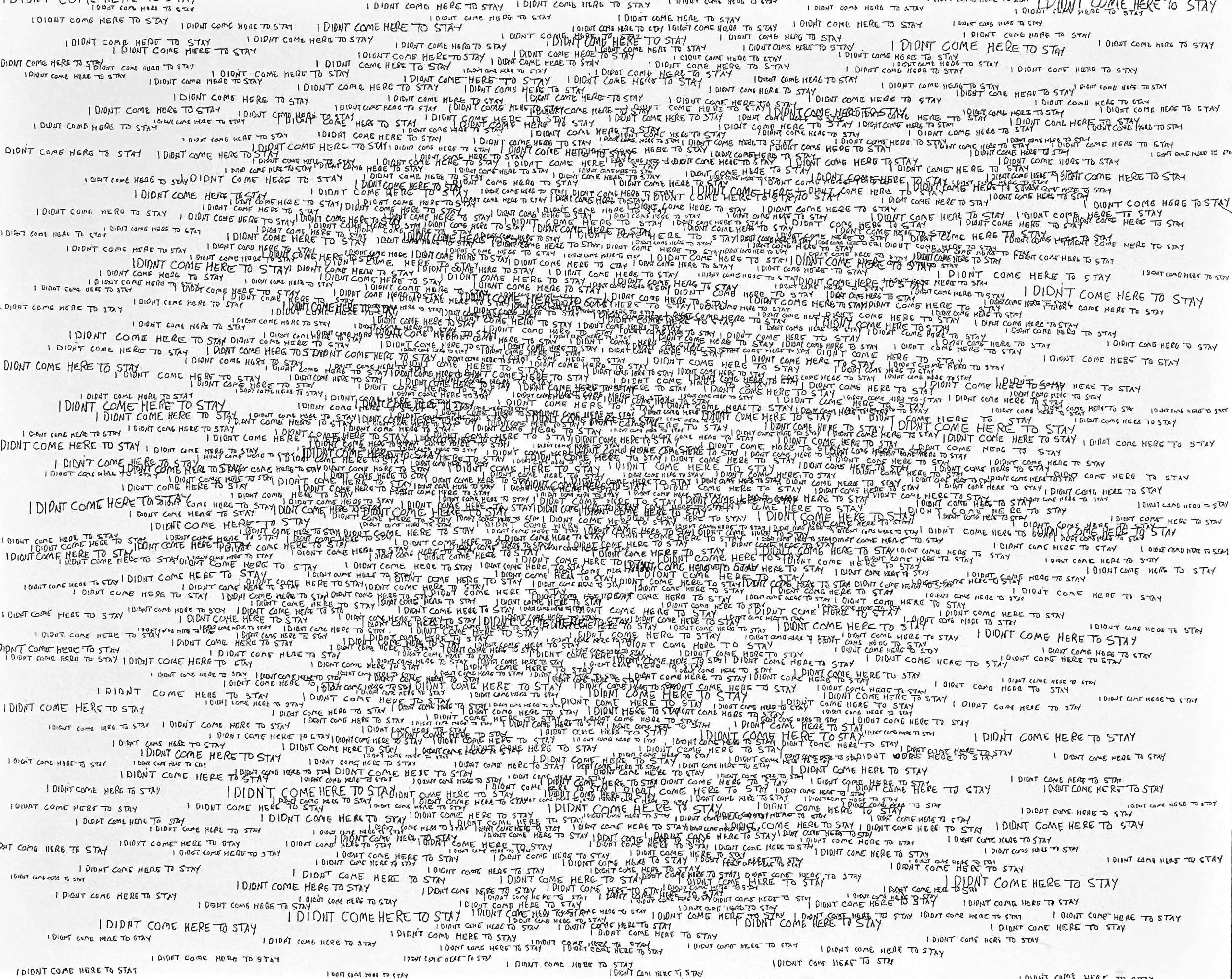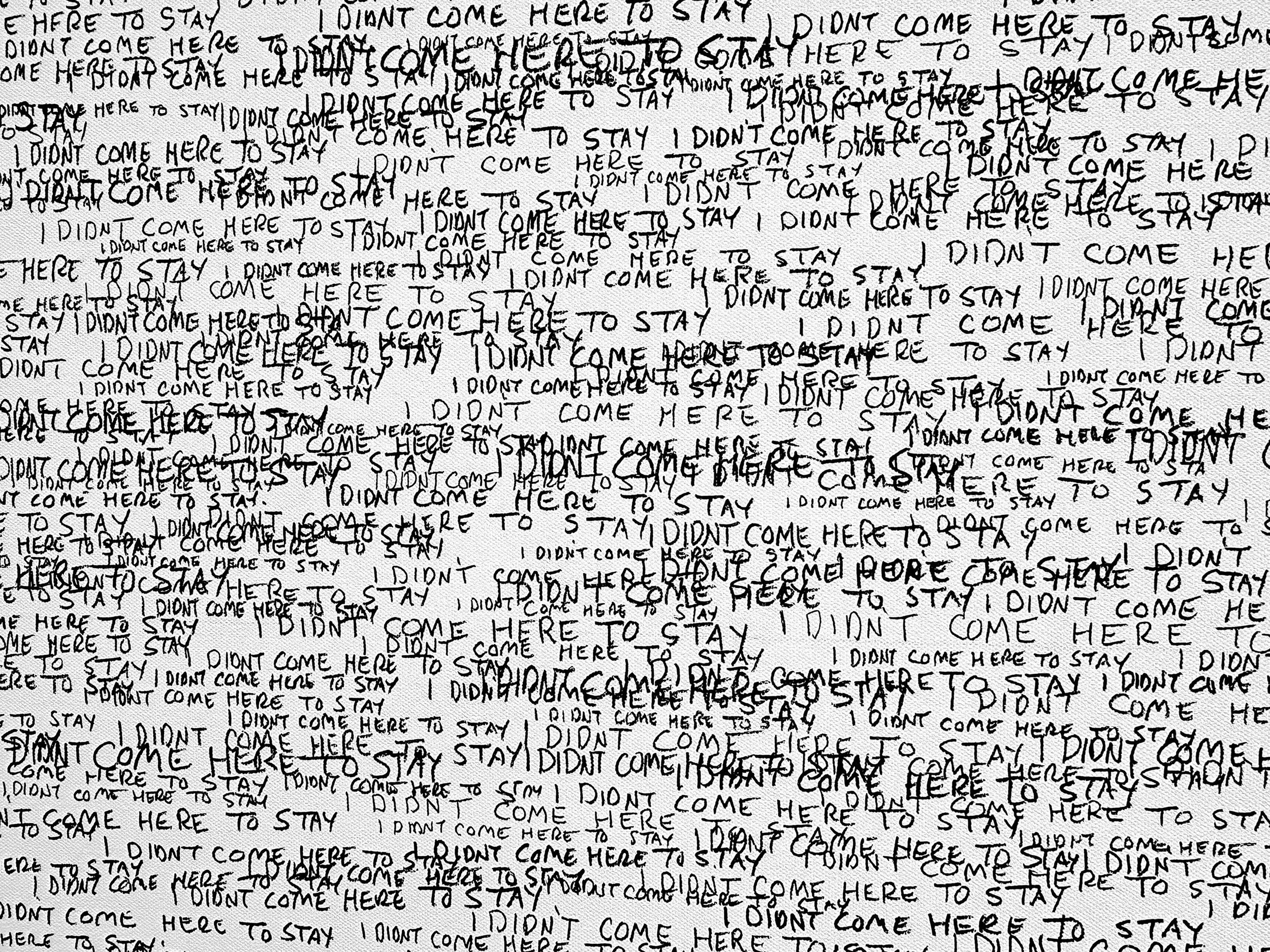TITLE: I Didn’t Come Here to Stay
48’ x 60”
Ink on Canvas
I was a voracious reader growing up—but privately, and often with a quiet sense of shame. I read differently. Words didn’t sit still for me. They floated, drifted, rearranged themselves on the page. Writing was worse. My hand never felt fully under my control, like it was being pulled by something invisible. At school, I learned to mask it—memorizing, improvising, hiding the evidence of dyslexia before I even knew the word.
I often got into trouble, and the punishment was almost always the same: stand at the blackboard and write the same sentence over and over. I WILL NOT... again and again, like an incantation. Those moments left a lasting imprint—not just the physical strain of writing, but the emotional one. Writing became a site of exposure. Of tension. Of fear.
Decades later, I returned to that blackboard—not as a student, but as an artist. In conversation with a curator about language in my work, I found myself writing again. What began in sketchbooks—short phrases, quiet repetitions—evolved into large-scale text paintings. I don’t sketch them out. I let the words emerge as they need to. The repetition becomes a kind of brushstroke, each letter carrying the weight of the last.
The physical act of writing is still charged. I feel that same strange pull between mind and hand. Sometimes I leave letters out. Sometimes they drift. And yet, when I step back, something happens. The tension dissolves. The fragments settle into a rhythm. The paintings begin to look like how I see language when I read: floating, spacious, in motion. The canvas becomes the page I’ve always known—words like buoys on a calm sea, holding their place in the tide.
These works are not about precision. They’re about presence. Repetition becomes meditation. What was once punishment becomes a form of release.

